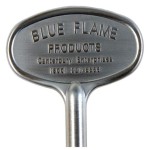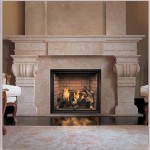Building an Indoor Fireplace: A Comprehensive Guide
An indoor fireplace can serve as a captivating focal point in any home, providing warmth, ambience, and even increasing property value. However, embarking on a fireplace construction project requires careful planning, adherence to building codes, and a solid understanding of the components involved. This article will detail the key aspects of building an indoor fireplace, from initial planning and design considerations to the actual construction process.
Before any physical work commences, a thorough assessment of the project's feasibility is essential. This includes checking local building codes and regulations, which often dictate the type of fireplace allowed, required clearances from combustible materials, and necessary permits. Failure to comply with these regulations can result in costly rework or even legal penalties. Engaging with a qualified structural engineer is crucial to determine if the existing structure can support the weight of the fireplace, especially in multi-story homes or those with unconventional foundation designs.
Safety is paramount when working with fire and combustion. Carbon monoxide detectors are mandatory in homes with fireplaces and should be installed in accordance with manufacturer's instructions and local codes. Proper ventilation is also critical to prevent the buildup of harmful gases and ensure efficient combustion. The chimney must be sized appropriately for the fireplace opening to create adequate draft and prevent smoke from entering the living space.
Choosing the Right Type of Fireplace
The first major decision involves selecting the type of fireplace that best suits the homeowner's needs and aesthetic preferences. The three primary types of indoor fireplaces are masonry fireplaces, factory-built fireplaces, and electric fireplaces. Each offers distinct advantages and disadvantages.
Masonry fireplaces, constructed with brick, stone, or concrete blocks, offer a traditional and robust look. They are known for their heat retention properties, radiating warmth even after the fire has extinguished. However, masonry fireplaces are the most expensive option, requiring significant labor and specialized skills for construction. They also demand a substantial foundation to support their weight and often necessitate a custom-built chimney.
Factory-built fireplaces, also known as prefabricated fireplaces, are metal fireboxes with a surrounding decorative enclosure. These units are typically less expensive and easier to install than masonry fireplaces. Factory-built fireplaces offer greater design flexibility, with options for gas, wood, or electric fuel sources. However, they generally have a shorter lifespan than masonry fireplaces and may not provide the same level of heat retention. Installation must strictly adhere to the manufacturer's instructions to ensure safe and efficient operation.
Electric fireplaces are the easiest to install and require no venting or fuel lines. They are essentially electric heaters that mimic the appearance of a real fire, often with realistic flame effects. Electric fireplaces are a convenient and cost-effective option for adding ambience and supplemental heat to a room. However, they do not provide the authentic experience of a wood-burning fireplace and may not be suitable for those seeking significant heat output.
Essential Components of a Fireplace System
Regardless of the type chosen, a properly functioning fireplace comprises several key components working in unison. Understanding the role of each component is crucial for successful construction and safe operation.
The Firebox: This is the chamber where the fire burns. In masonry fireplaces, the firebox is constructed with firebrick, a heat-resistant material that can withstand high temperatures. In factory-built fireplaces, the firebox is typically made of steel or cast iron. The firebox must be properly sized and shaped to promote efficient combustion and direct smoke up the chimney.
The Damper: This is a movable plate located at the top of the firebox, used to control airflow. When the fireplace is in use, the damper is opened to allow smoke to escape up the chimney. When the fireplace is not in use, the damper is closed to prevent drafts and heat loss. A properly functioning damper is essential for energy efficiency and preventing backdrafts.
The Smoke Chamber: This is a transition area above the firebox that directs smoke into the chimney. The smoke chamber should be smooth and tapered to optimize airflow and prevent turbulence, which can cause smoke to back up into the room.
The Chimney: This is a vertical structure that carries smoke and combustion gases away from the fireplace. The chimney must be properly sized and constructed to create adequate draft and ensure safe venting. Chimneys can be constructed of masonry, metal, or a combination of both. Regular chimney inspections and cleaning are essential to prevent creosote buildup, which can pose a fire hazard.
The Hearth: This is a non-combustible surface that extends in front of the firebox, providing a safe barrier between the fireplace and the surrounding flooring. The hearth must be sized according to code requirements to protect against sparks and embers that may escape the firebox.
Construction Process and Considerations
The construction process varies significantly depending on the type of fireplace chosen. Masonry fireplaces require extensive planning, skilled labor, and specialized tools. Factory-built fireplaces are generally easier to install, but still require careful attention to detail and adherence to manufacturer's instructions.
For masonry fireplaces, the foundation must be built to support the weight of the structure. The firebox is then constructed with firebrick, followed by the smoke chamber and chimney. Mortar joints must be properly sealed to prevent leaks and ensure structural integrity. The exterior of the fireplace can be finished with brick, stone, or other decorative materials.
For factory-built fireplaces, the unit is typically installed within a framed enclosure. The chimney is then connected to the fireplace, ensuring proper alignment and sealing. The enclosure can be finished with drywall, wood, or other decorative materials. Proper clearances from combustible materials must be maintained to prevent fire hazards.
Regardless of the type of fireplace, professional installation is highly recommended, particularly for gas-fueled units. A qualified contractor can ensure that the fireplace is installed safely and efficiently, complying with all applicable building codes and regulations.
Furthermore, ongoing maintenance is crucial for ensuring the long-term safety and efficiency of an indoor fireplace. Regular chimney inspections and cleaning are essential to remove creosote buildup and prevent fire hazards. The damper should be inspected annually to ensure proper operation. Any cracks or damage to the firebox or chimney should be repaired promptly. By following these guidelines and prioritizing safety, homeowners can enjoy the warmth and ambience of an indoor fireplace for years to come.

How To Build An Indoor Fireplace The Constructor

How To Build A Diy Built In Fireplace With An Electric Insert The Creative Mom

How To Build An Indoor Fireplace The Constructor

Building An Electric Fireplace With Brick Facade

How To Build A Indoor Fireplace Step By Simple Guideline

How To Build A Diy Stone Fireplace Boxwood Design Co

How To Build An Indoor Fireplace The Constructor

How To Install A Freestanding Fireplace 5 Easy Steps L Esseiale

How To Build A Diy Fireplace Surround For Your Electric Insert Hand Treated Home

Diy Electric Fireplace Build








